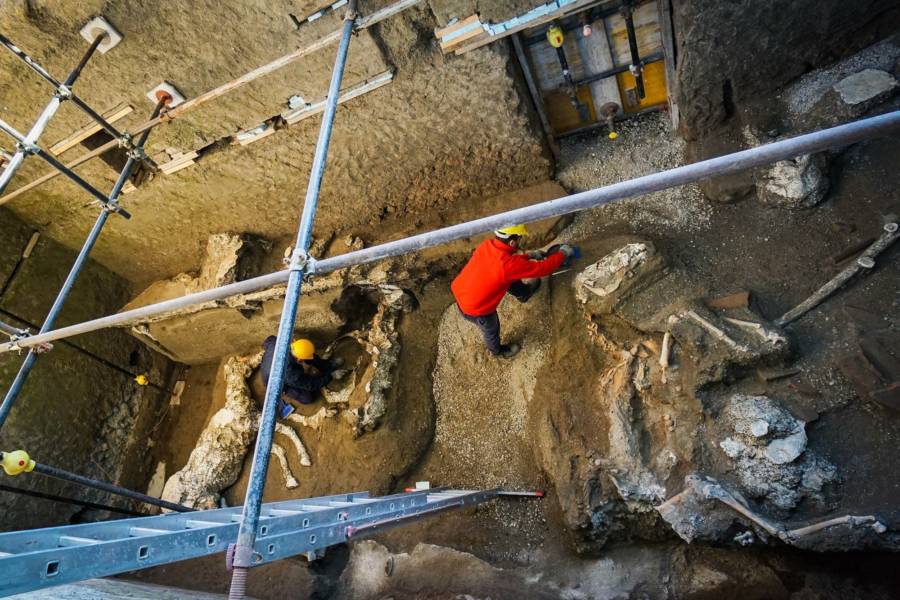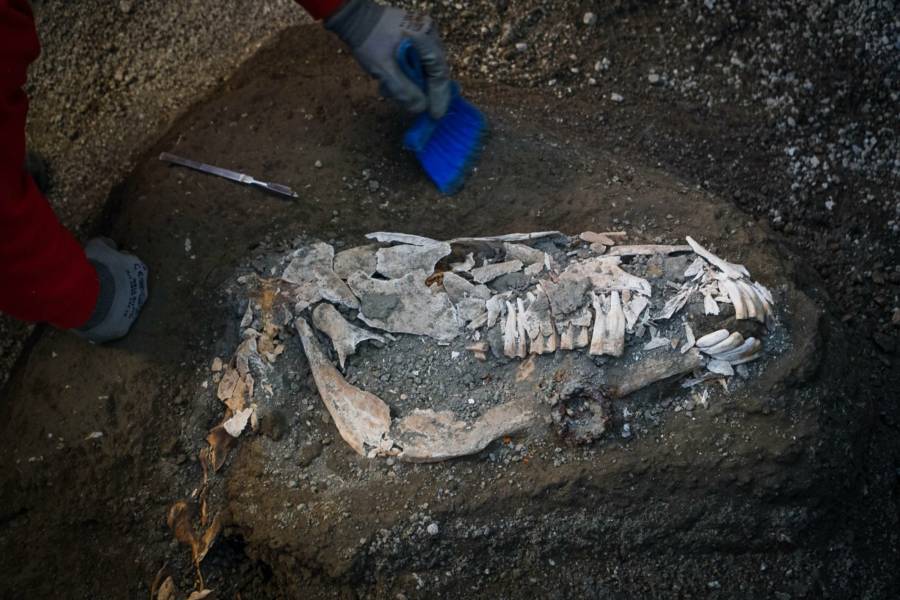Military Horse Prepped To Rescue Victims Of Pompeii Found In Its Stable
The horse was found in full saddle suggesting that it was being prepped to rescue those fleeing the volcanic eruption.

Cesare Abbate/ANSA Via APThe remains of a military official’s horse, discovered in Pompeii. Dec. 23, 2018.
Awe-inspiring discoveries at the Pompeii archaeological site keep coming with
the recent uncovering of a highly well-preserved horse — still harnessed and in its stable. The animal was killed in a flash when the nearby Mount Vesuvius erupted in 79 A.D.The horse was found lying in its stable in the Villa of the Mysteries, a luxurious ancient homestead in a Pompeii suburb that overlooks the sea and once belonged to a high-ranking Roman military official. The estate was originally dug up early in the 1900s but has since fallen victim to burglary (though officials hope it can be restored and reopened to the public).

Cesare Abbate/ANSA Via APThe bodies of several horses side-by-side in their stables.
Massimo Osanna, the director of the archaeological site,
reported that they believe the horse to have belonged to that high-ranking military official. The horse was saddled up in a harness of wooden and bronze trimmings and archaeologists believe that the animal was being prepared to help rescue fleeing Pompeians from the eruption.
Additionally, the horse is believed to have been well-groomed and outfitted in rich metals. It was found alongside several other horses who also perished violently right there in the stables as a result of the eruption.The horses would have died via suffocation under the ash or boiled from the inside out due to the extreme temperatures of the surrounding volcanic vapor.

Cesare Abbate/ANSA Via APA skeleton of a military horse.
The horses and stables are but one of many treasures recently uncovered in Pompeii.Last year, the discoveries at Pompeii included an ancient erotic fresco, a gilded shrine, and a graffitied inscription in an unfinished building that suggests a different date for the eruption than previously thought.
Researchers also came to the gruesome realization last year that the excruciating temperatures from Mount Vesuvius must have boiled the blood and exploded the brains of many of its victims, as evidenced by consistent cracks in the tops of victims’ skulls.






No comments:
Post a Comment